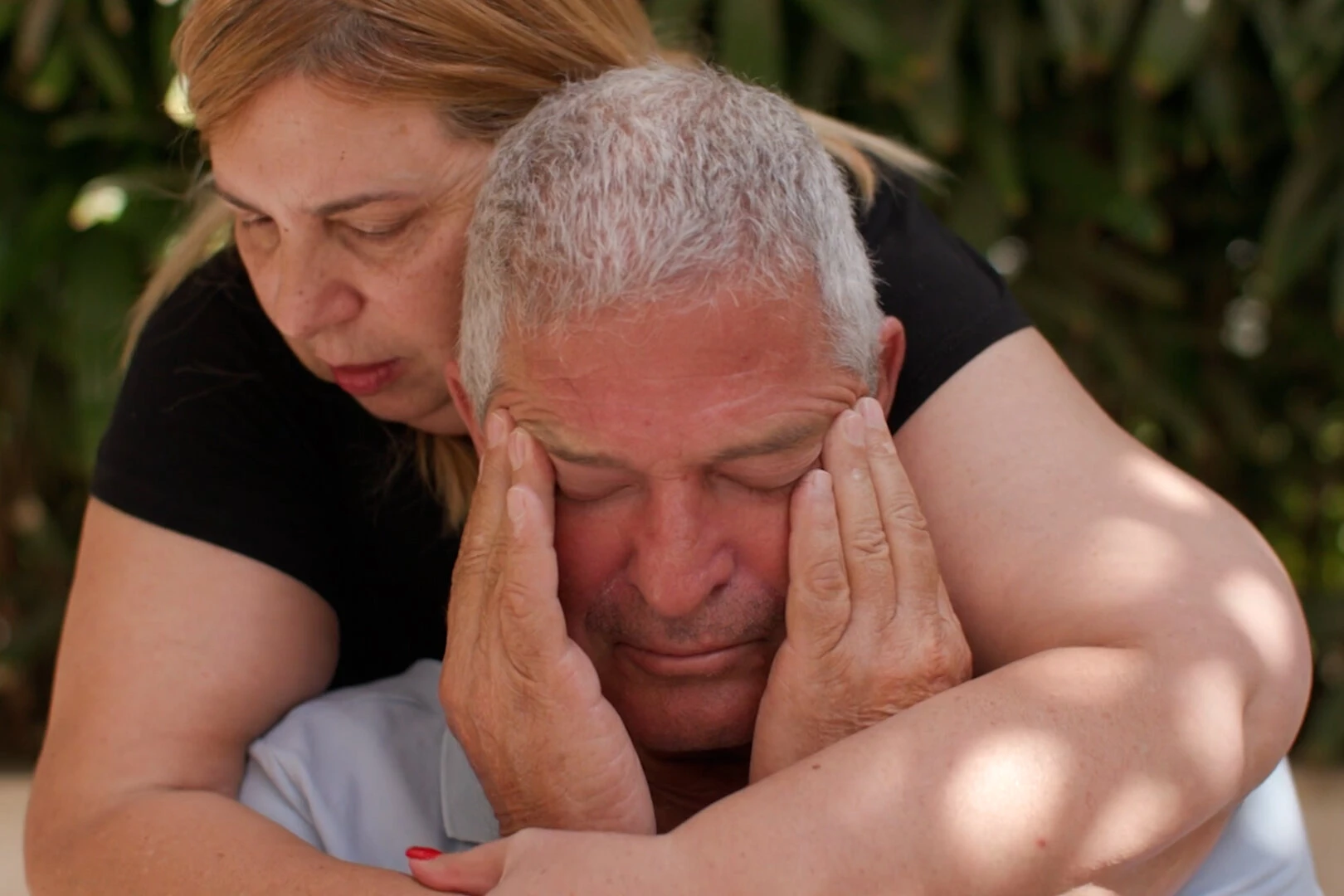Amnon Tal is among the first residents to go back to the Israeli kibbutz of Kfar Aza after it was targeted by Hamas fighters. He has to, he says, as he survived.
"We're going to the Fakter family's house," he says as he barrels his car through broken glass and blackened debris from the deadly October 7 attack.
"I've got a few things to pick up. I'll call them."
The small farming community in southern Israel is just under a mile (1.6 kilometres) from the heavily fortified border with the Gaza Strip.
On October 7, Hamas militants broke through the security fence and went from house to house in Kfar Aza, killing residents in cold blood, according to the Israeli authorities.
In the attack, which lasted several hours, one in seven of the population -- 100 out of 700 -- were killed, including children, the army said.
"We're the survivors," said Tal, 55. "Whoever comes back is still alive."
On the phone with his neighbour, Tal goes through a living room destroyed by grenade strikes.
He takes a look into the children's bedroom and retrieves greetings cards and some cash from a chest of drawers for her.
In the boot of his car, he already has a framed picture of a neighbour, taken off the wall of a living room to place on his coffin.
Neighbours have given him their house keys, which hang on a piece of string in his car.
But they're useless in Kfar Aza, as no house still has its doors or windows.
- Inhuman -
"The people who did this aren't human, they're animals, they killed without a problem, as if for fun," said Tal, who has been at funeral after funeral for his friends and neighbours.
In front of his own house, a sign saying "Tal Family" lies upturned on the lawn.
Tal is the head of the family, an Israeli of Indian origin who works at the local plastics factory.
He points to the stone from the garden that was used by two Hamas attackers to break the glass window of his door to get inside.
"There, look how they show from the window with a Kalashnikov," he says, pointing to bullet holes on the fridge.
His 16-year-old son's bedroom is also riddled with bullet holes, including the screen of his games console.
Bullet casings from Hamas weapons cover the teenager's mattress.
During the attack, Amnon, his wife and son hid in the anti-rocket shelter at their house.
The room has a reinforced armoured door which can be opened from the outside as well as inside.
But as soon as the first shots were fired, Tal had the presence of mind to remove the outside handle of the shelter.
He then hid inside, armed only with a 30-centimetre (10-inch) butcher's knife.
"I stayed like that with the knife in my hand for four hours," he says, reliving the scene, his eyes bulging.
Tal won't entertain any talk about psychological support. He insists he's "strong enough" and prefers to make himself useful to his traumatised community.
His family is now with fellow survivors in another kibbutz in central Israel.
"We're not coming back until we're done," he says, pointing in the direction of the Palestinian territory next to the kibbutz fields.
Outside, Israeli army tanks, their guns aimed at Gaza, fire every few minutes. Since October 7, the relentless bombardment has left at least 3,478 dead.
In Israel, more than 1,400 have been killed, most of them civilians. Israel has also said 199 were kidnapped by Hamas and are still being held.


